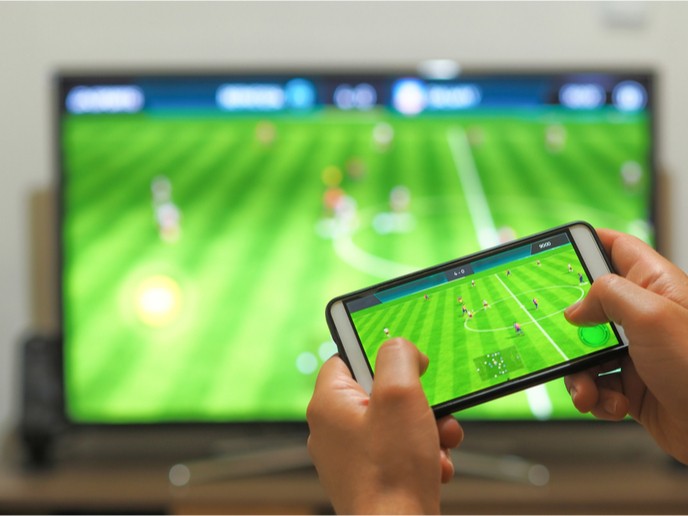Helping Europeans with disabilities access media content more easily
There are currently 80 million people with disabilities living in Europe. There are also an estimated 81.5 million adults suffering from hearing loss in Europe, meaning that one in seven adults will be affected by a hearing problem. Furthermore, according to the World Blind Union(opens in new window), 23.5 % of the EU population has visual issues. Considering Europe’s ageing population, these figures will only increase. In fact, by 2020, it is estimated that 120 million people in the EU will have multiple and/or minor disabilities. All these numbers add up to a clear (and growing) demand for accessible products and services – such as the multimedia audiovisual platform being developed by the EASYTV (Easing the access of Europeans with disabilities to converging media and content) project. To learn more, we talked with Federico Alvarez, EASYTV project coordinator.
Why is it important that people with disabilities be able to access audiovisual services?
Alvarez: One of the many challenges people with various degrees of sensory disabilities face is difficulty accessing mainstream audiovisual products and services, such as television, radio, and online content. Being excluded from enjoying audiovisual services can result in people with disabilities being marginalised from the rest of the population. This is problematic, especially in today’s information society, where access to information should be freely available to everyone. Without equal access, people with disabilities face an unequal chance of reaching their full potential – both personally and professionally. The accessible products and services we’re working on support independent living and autonomous choice, both key to ensuring everyone has an equal opportunity to participate in society.
How does the EASYTV project help ‘even the playing field’?
The problem with the accessibility solutions currently on the market is that they tend to be geared solely to watching traditional television. As today’s media goes well beyond the analogue, new, comprehensive solutions are needed. EASYTV aims to foster a wider availability of inclusive media offerings to everybody and to provide equal access to audiovisual services for all users, especially for persons with various degrees of disabilities. To do this, we are working to improve the services that provide enhanced multimedia audiovisual experiences for people with disabilities, with a particular focus on personalising these services. We are also developing new technologies, such as on-screen sign language interpretation and a voice/gesture-based remote control.
Can you explain some of the system’s key features?
At the heart of EASYTV is a personalisation of content, which is accomplished using a combination of interactive features and sign language translations. This is done using a component-based system that delivers accessible content via a range of internet-connected devices, including televisions and computers. Some examples are the automatic magnification of faces for low-vision users, automatic scene description for blind people, and presenting content using a multilingual realistic avatar on TV or second screen for deaf people, to name only a few of our innovations. Specifically, the EASYTV architecture comprises of a number of different components, each of which plays a specific role in the production and delivery of accessible content. Take for example the multiterminal technical platform, which is the component that makes broadcasted content accessible to users with disabilities based on the Global Public Inclusive Infrastructure. This content is then ‘translated’ into subtitling, onscreen sign language or audio descriptions using a range of platform-based service components. The end user then simply needs to access the EASYTV service catalogue, from which they can select the services they want.
What is the most important result achieved so far?
We’re really excited about a set of multilingual access services we created. These services can be used to enhance the media experience of people with disabilities in different consumer devices, such as TVs, companion screens and smartphones. They have already been tested by actual end-users, which confirmed their interest in using such services. These services are now being integrated into a platform, which broadcasters and content producers can use to easily create accessible content with little impact on their workflow – or budget.
How will the EASYTV system evolve?
The project itself goes until 2020, so the system is still very much a work-in-progress. However, the EASYTV system is designed so it can be upgraded to meet users’ evolving needs even after the project has ended. This is because our unique crowdsourced service development kit makes it possible for third-party developers and external software companies to continually add new services to EASYTV’s multiterminal technical platform. Furthermore, we have service applications that can be easily installed on various digital devices, which makes EASYTV accessible on the latest smartphones and tablets. As a result, the EASYTV ecosystem will always be improving!
What are the next steps?
Right now, we are focused on fostering the adoption of EASYTV by end-user communities, European broadcasters and content owners. We’re also constantly growing our crowdsourcing platform – which is the key to ensuring EASYTV’s longevity. Simultaneous to this user-focused work, the project team is focused on financing and ensuring that the system complies with all applicable European and international standards – even going so far as proposing changes to current standards in ETSI, ITU and ISO to take into account the novel technologies proposed in the project.
Countries
Spain



